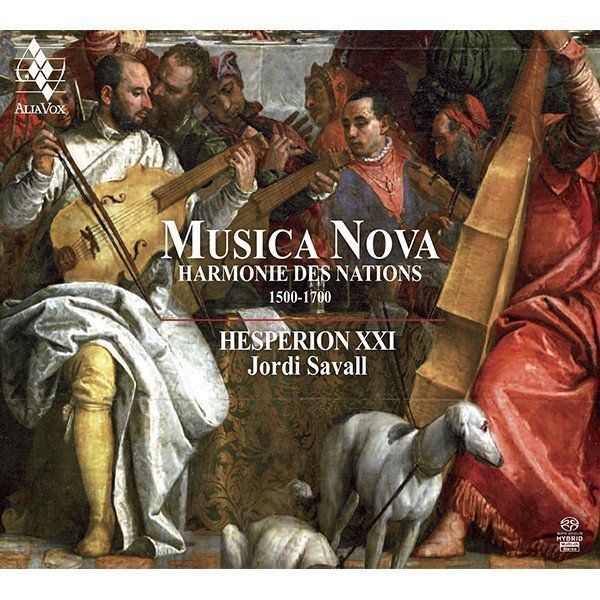MUSICA NOVA 1500-1700
Harmonie des Nations
Hespèrion XXI, Jordi Savall
17,99€
Perhaps it all goes back to one dark winter’s night of the incipient and hope-filled year of 1400, at the dawn of a century that had just begun. A century which was soon to unravel the marvellous stories and odysseys of a newly rediscovered millennial civilization, an ancient era when philosophers taught wisdom and humanity, when the music of Orpheus could tame even the most savage of beasts. In the midst of so many novelties and marvels, it is no wonder that minstrels aspired to a new, more expressive and richer sound, to create a musica nova, or a new music, that came from a single instrument combining the love song of the old vihuela de arco or bowed fiddle, the rebab or troubadour’s rebec, and the sweet sounds of the Moorish lute, with its potential for beautiful harmonies and joyful rhythms, which gave way to the vihuela de mano in the wake of the successive expulsions of the Jews in 1492 and the Moriscos in 1609.
“this is an immensely enjoyable listen, its music both ravishing and substantial in the hands of these experienced performers. Savall makes no attempt to hide that they have recorded most of its music before, instead identifying the project as an excuse to celebrate over 50 years of working with it. Thus the best way to consume it is to sit back, treat it as the concert it once was and revel in the sound of viols, lute and percussion played with beauty and wisdom, and in perfect balance.”
Lindsay Kemp – Gramophone, November 2018
A new instrument for a new of music
ORIGINS
Perhaps it all goes back to one dark winter’s night of the incipient and hope-filled year of 1400, at the dawn of a century that had just begun. A century which was soon to unravel the marvellous stories and odysseys of a newly rediscovered millennial civilization, an ancient era when philosophers taught wisdom and humanity, when the music of Orpheus could tame even the most savage of beasts. In the midst of so many novelties and marvels, it is no wonder that minstrels aspired to a new, more expressive and richer sound, to create a musica nova, or a new music, that came from a single instrument combining the love song of the old vihuela de arco or bowed fiddle, the rebab or troubadour’s rebec, and the sweet sounds of the Moorish lute, with its potential for beautiful harmonies and joyful rhythms, which gave way to the vihuela de mano in the wake of the successive expulsions of the Jews in 1492 and the Moriscos in 1609.
It was the dawn of a new era of European civilization, poised to leave behind the old Middle Ages, and which, thanks to the rediscovery of Ancient Greek civilization, began to shape a new world full of ideals, hope, beauty and creativity, of discoveries and conflicts, of wisdom as well as fanaticism, but one which would nevertheless seek to put man at the centre of life.
+ information in the CD booklet
JORDI SAVALL
Vienna and Bellaterra
January and February 2018
Translated by Jacqueline Minett







Share